Assertion:- Materials can be stretched even beyond proportionality limit. (point till which Hooke's law is valid is called proportionality limit)
Reason:- Elastic forces can be conservative even beyond proportional limit.
Proportional limit
Plastic limit
Fracture limit
Inelastic limit
The correct Answer is:A
Step by step video, text & image solution for Assertion:- Materials can be stretched even beyond proportionality limit. (point till which Hooke's law is valid is called proportionality limit) Reason:- Elastic forces can be conservative even beyond proportional limit. by Physics experts to help you in doubts & scoring excellent marks in Class 12 exams.
Updated on:21/07/2023Topper's Solved these Questions
Similar Questions
The stress strain graph for a metal wire is shown in the fig. Upto the point E, the wire returns to its original state O along the curve EPO, when it is gradually unloaded. Point B corresponds to the fracture of the wire. (a) Upto what point on the curve is Hooke's law obeyed? (this point some times called proportional limits).

(b) Which point on the curve corresponding to elastic limet or yield point of the wire?
(c ) Indicate teh elastice and plastic regions of the stree-strain graph.
(d) Describe what happens when the wire is loaded upto a stress corresponding to the point A on the graph and then unloaded gradulally. In particular explain the dotted curve.
(e) Wht is peculiar about the protion of the stree- strain graph from C to B? Upto what stress can the wire be subjected with out causing fracture?
View SolutionA steel wire of length 2L and cross-section area A is stretched, wetl within elastic limit horizontally between two pillars, a mass m is suspended from the mid-point of wire such that depression at the middle is X. Strain in the wire is proportional to
View Solution
Knowledge Check
If a metal wire is stretched a little beyond its elastic limit (or yield point), and released, it will
Alose its elastic property completelyBnot contractCcontract, but its final length will be greater than its initial lengthDcontract only up to its length at the elastic limitOn applying external force beyond the elastic limit,
Ano effect is produced on the materialBpermanent deformation of the object is causedCdeformation is zeroDmatter is liquifiedThe metal which do not break beyond elastic limit is
AductileBbrittleCboth 'a' and 'b'Dplastic
Assertion: The ion cannot move with a speed beyond a certain limit in a cyclotron.
Reason: As velocity increases time taken by ion increases.
View SolutionStatement-1: When a wire is stretched with in the proportionality limit such that its length becomes n times that of its initial value, the resistance of wire may become n2 times of its initial resistance
Statement-2: The poisson's ratio of the wire's material can be 1//2.
View SolutionFigure shows the relationship between tensile stress and strain for a typical material. Below proportional point A, stress is directly proportional to strain which means Young's moudulus (Y) is a constant. In this region the material obeys Hooke's law.
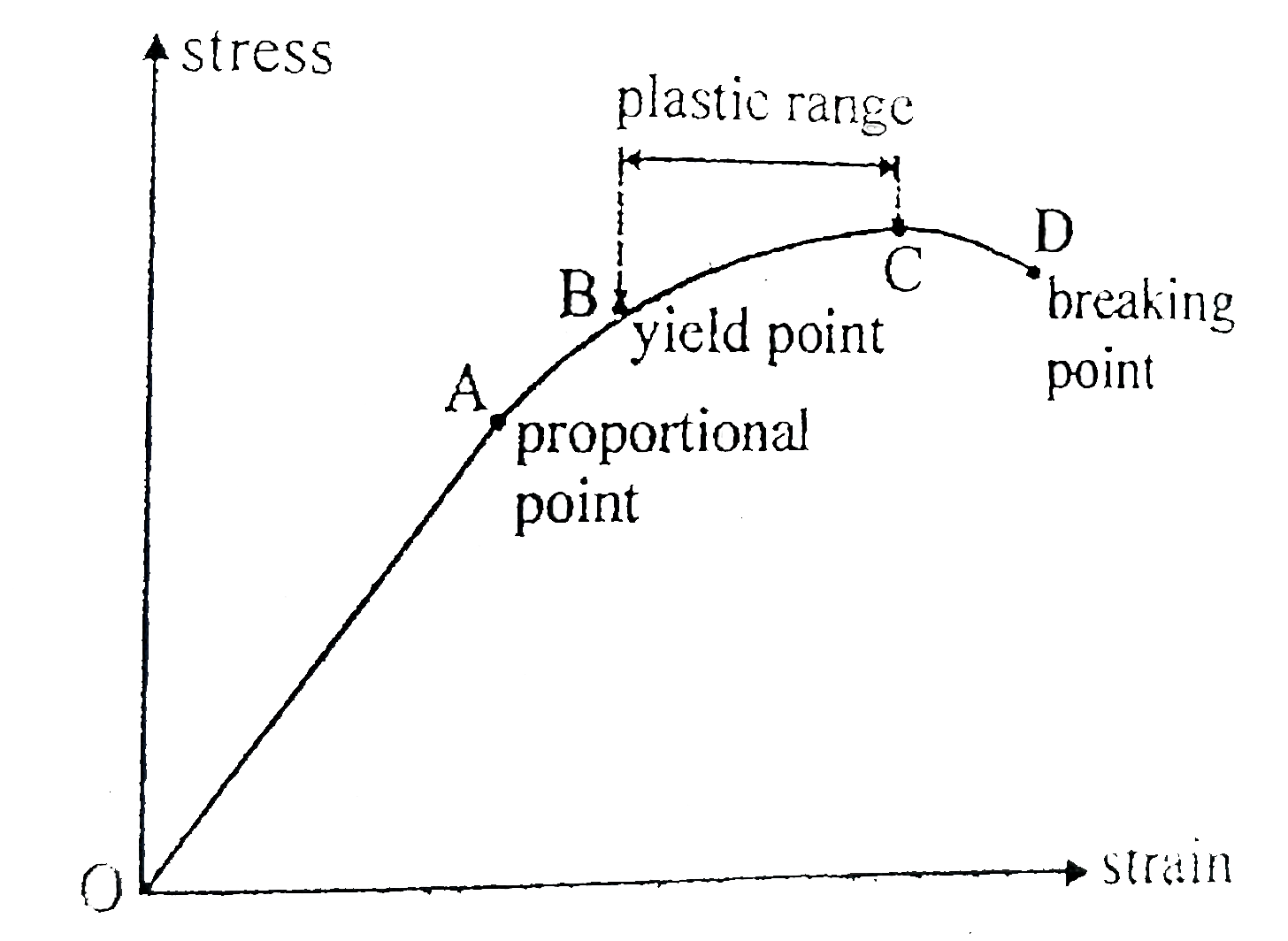
Provided the strain is below the yield point 'B' the material returns to its original shape and size when the force is removed. Beyond the yield point, the material retains a permancnt deformation after the stress is removed. For stresses beyond the yeld point, the material exhibit plastic flow, which means that it continues to elongate for little increases in the stress. Beyond C a local constriction occurs. The material fractures at D (i.e. breaking point). The graph below shows the stress-strain curve for 4 different materials.
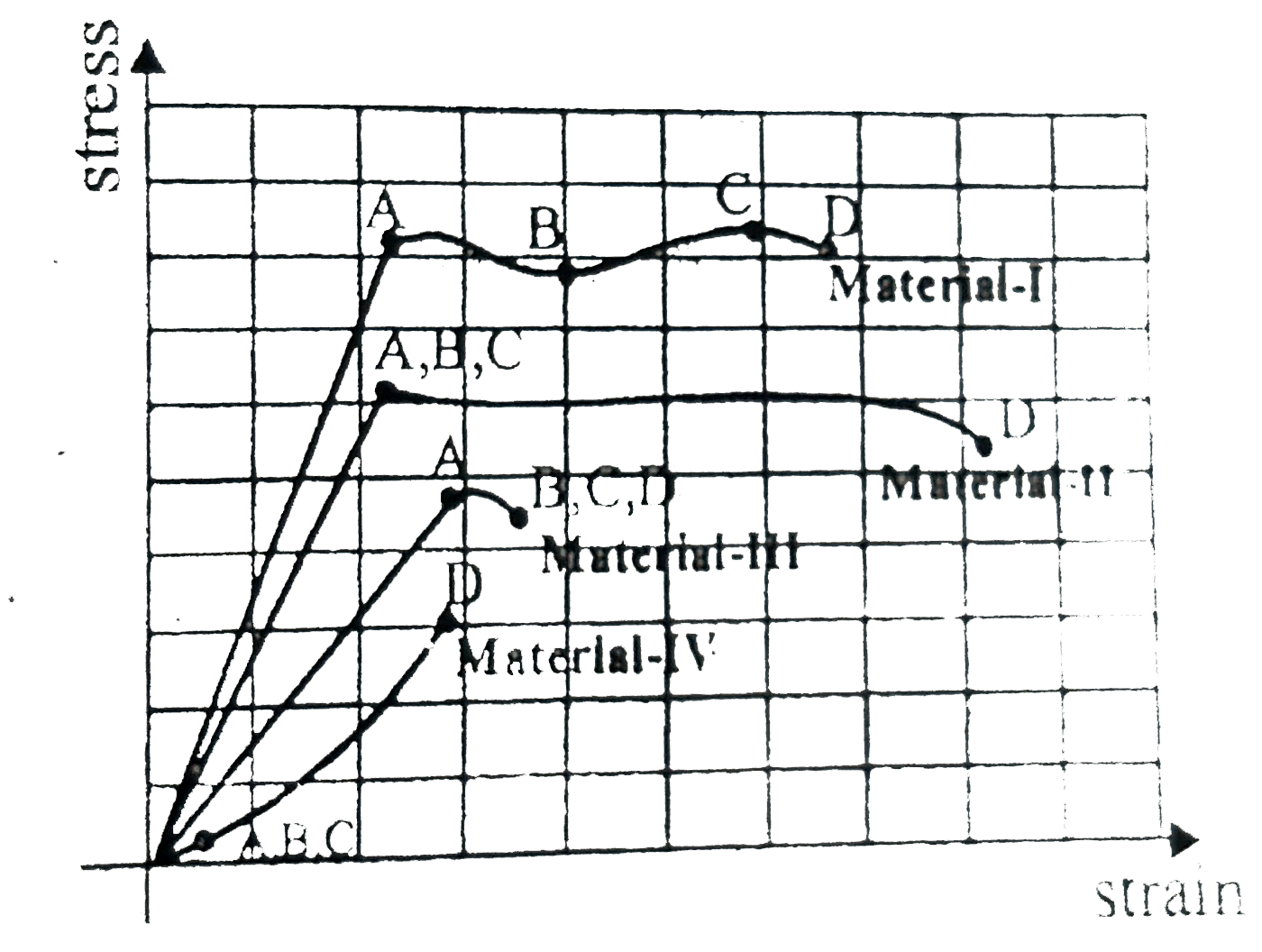
Material which is good for making wires by stretching is
View SolutionFigure shows the relationship between tensile stress and strain for a typical material. Below proportional point A, stress is directly proportional to strain which means Young's moudulus (Y) is a constant. In this region the material obeys Hooke's law.
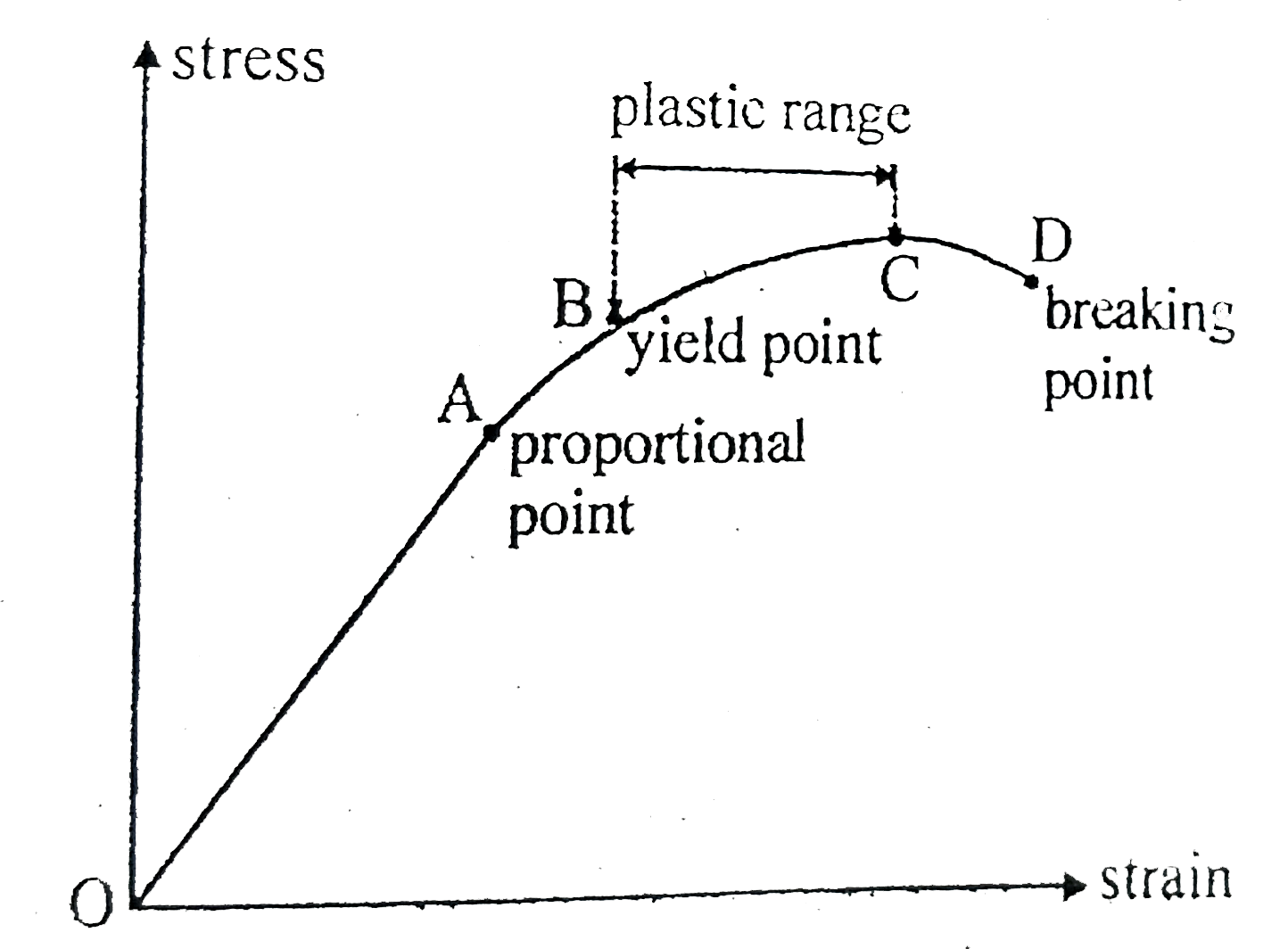
Provided the strain is below the yield point 'B' the material returns to its original shape and size when the force is removed. Beyond the yield point, the material retains a permancnt deformation after the stress is removed. For stresses beyond the yeld point, the material exhibit plastic flow, which means that it continues to elongate for little increases in the stress. Beyond C a local constriction occurs. The material fractures at D (i.e. breaking point). The graph below shows the stress-strain curve for 4 different materials.
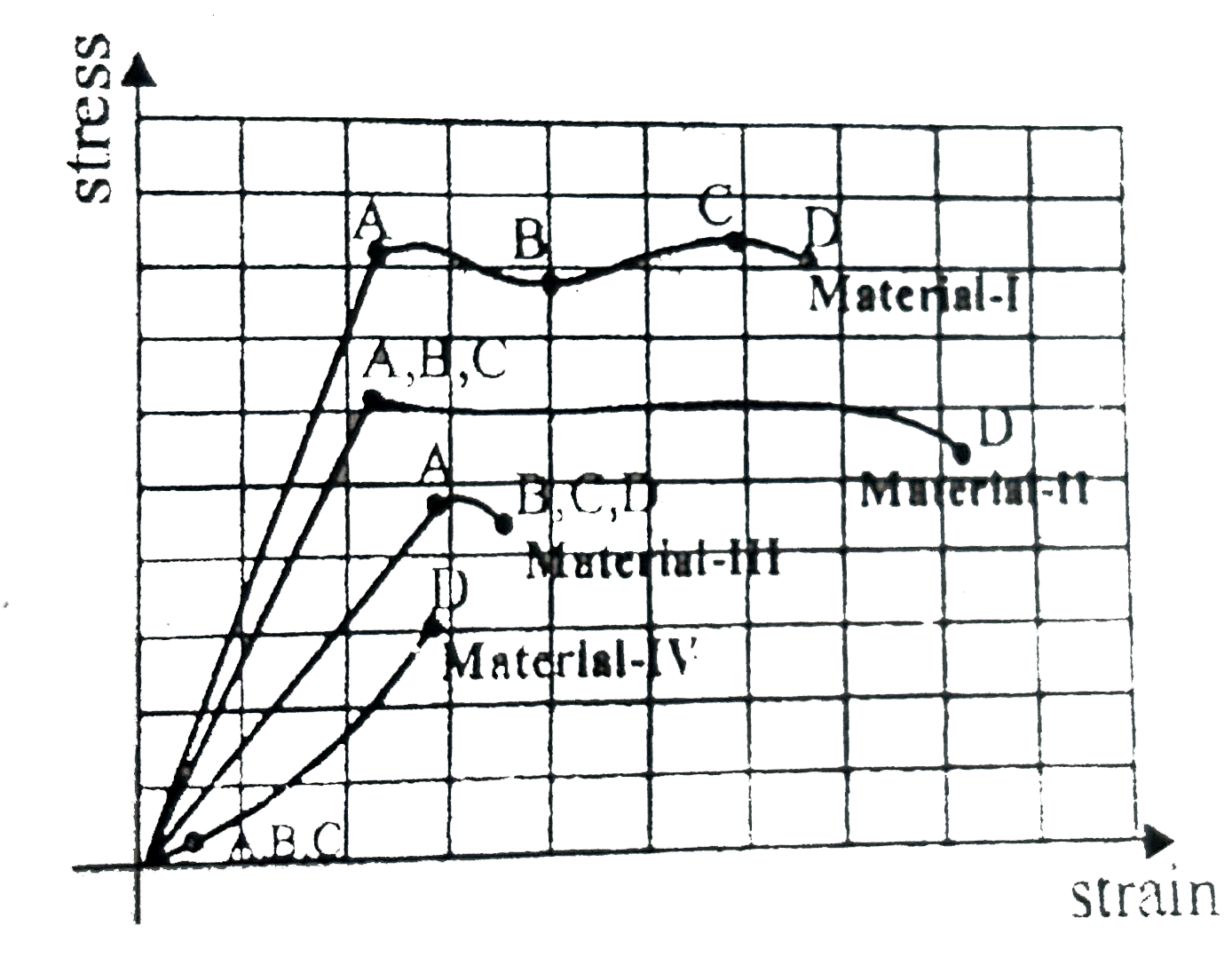
Material which is most brittle is
View SolutionFigure shows the relationship between tensile stress and strain for a typical material. Below proportional point A, stress is directly proportional to strain which means Young's moudulus (Y) is a constant. In this region the material obeys Hooke's law.
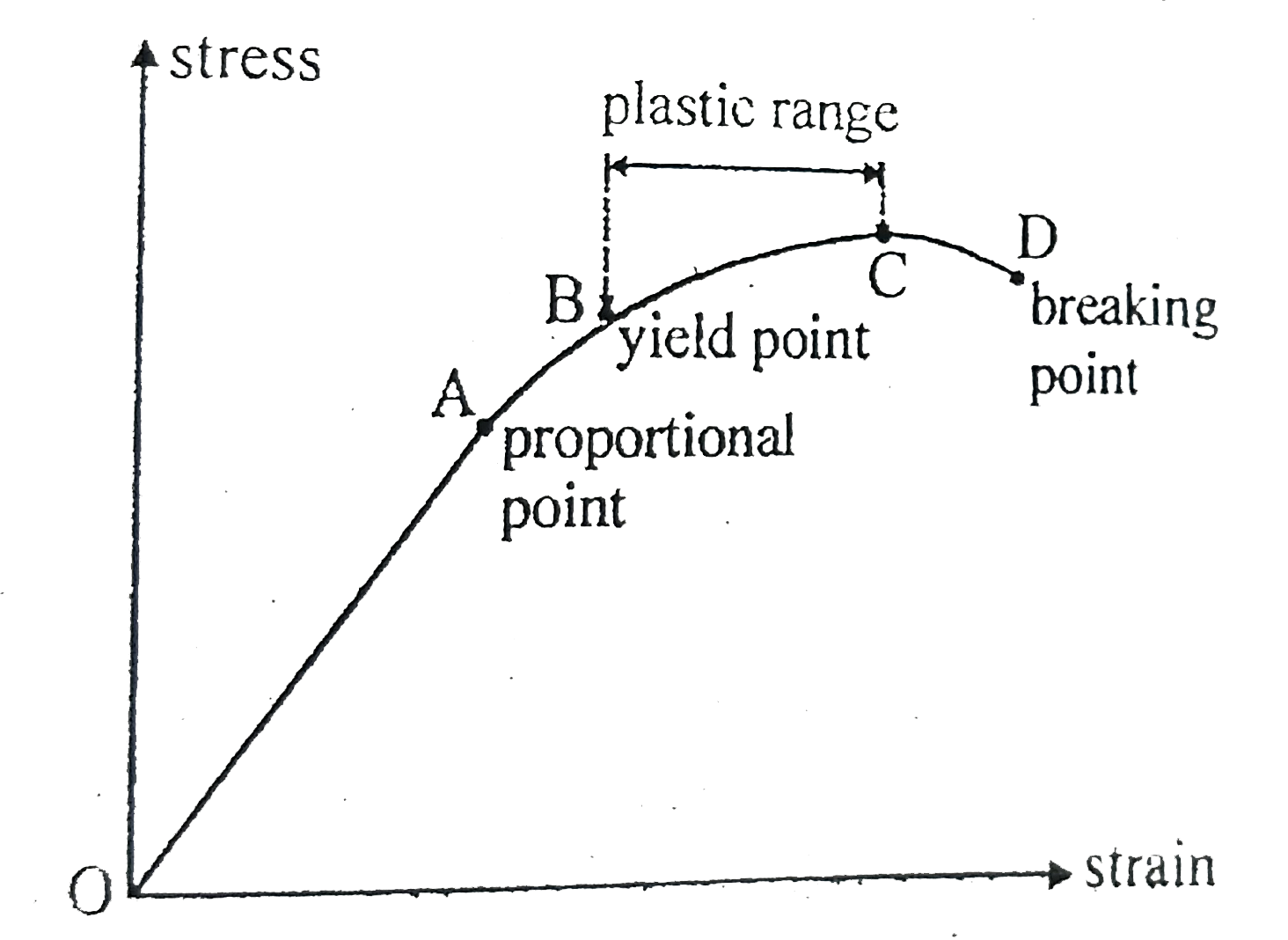
Provided the strain is below the yield point 'B' the material returns to its original shape and size when the force is removed. Beyond the yield point, the material retains a permancnt deformation after the stress is removed. For stresses beyond the yeld point, the material exhibit plastic flow, which means that it continues to elongate for little increases in the stress. Beyond C a local constriction occurs. The material fractures at D (i.e. breaking point). The graph below shows the stress-strain curve for 4 different materials.
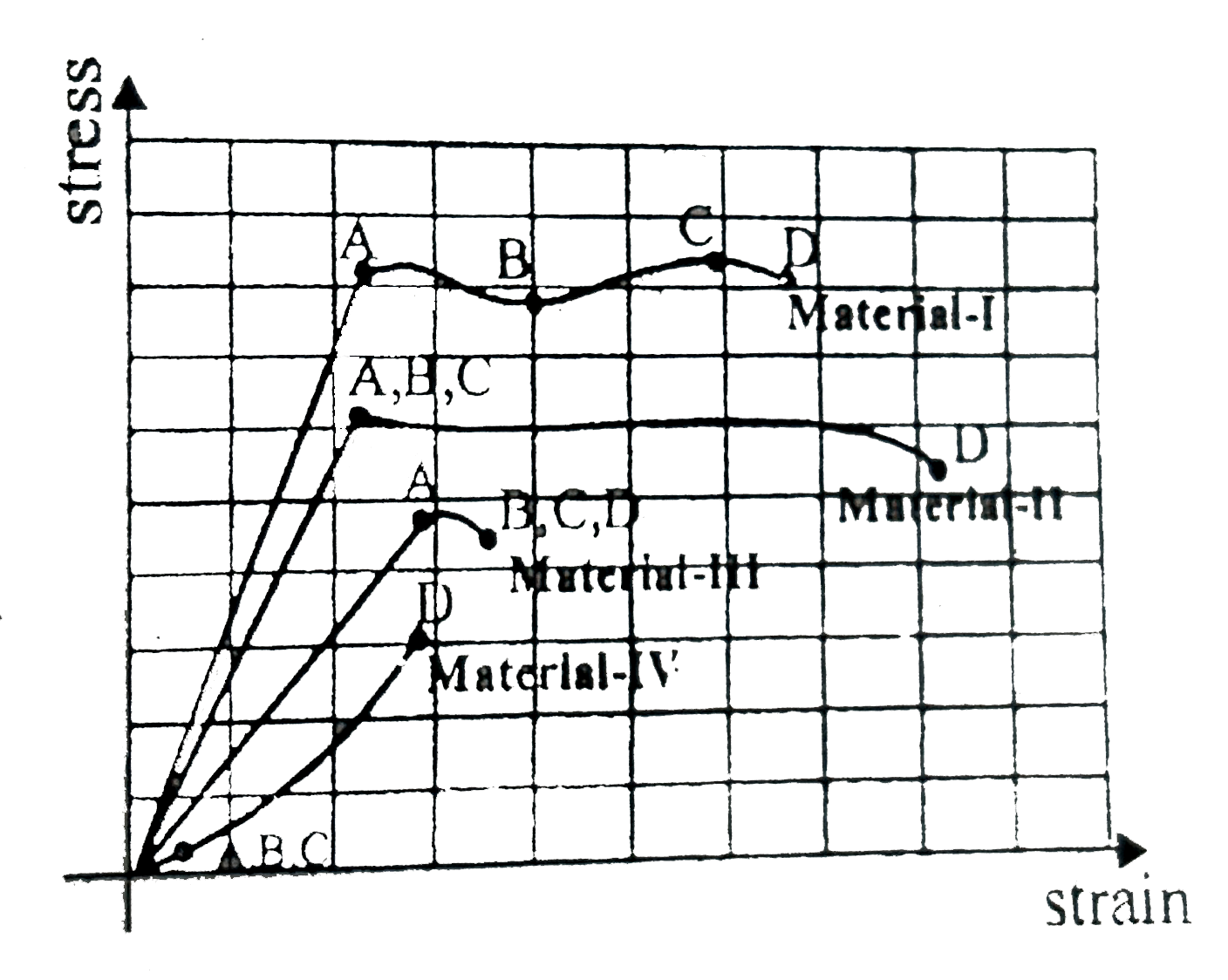
If you bough a new shoe which bites in the beginning and later on fits perfectly, then the material used to making the shoe is
View Solution
